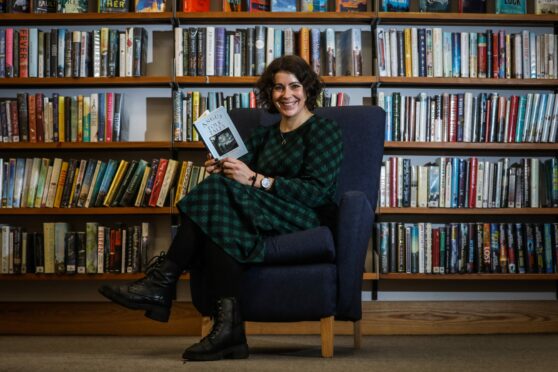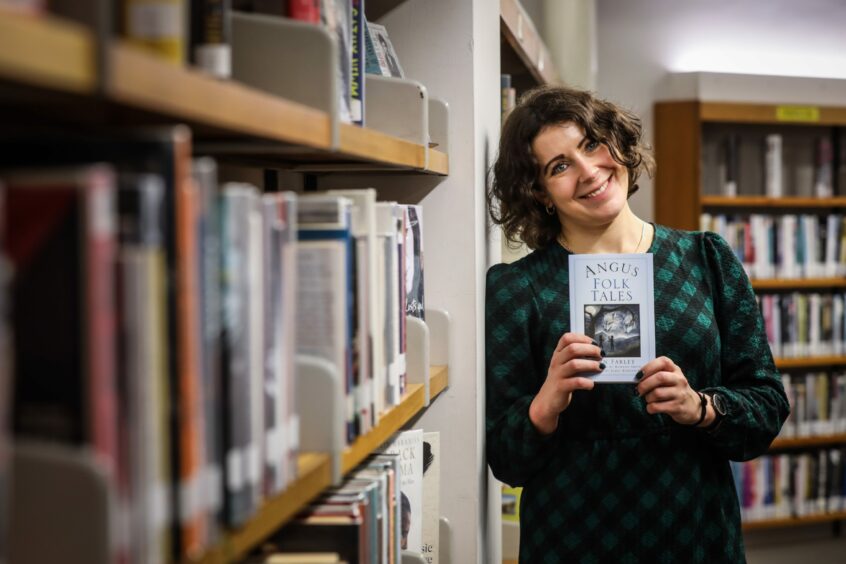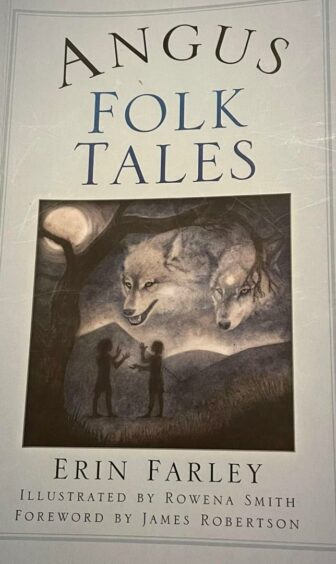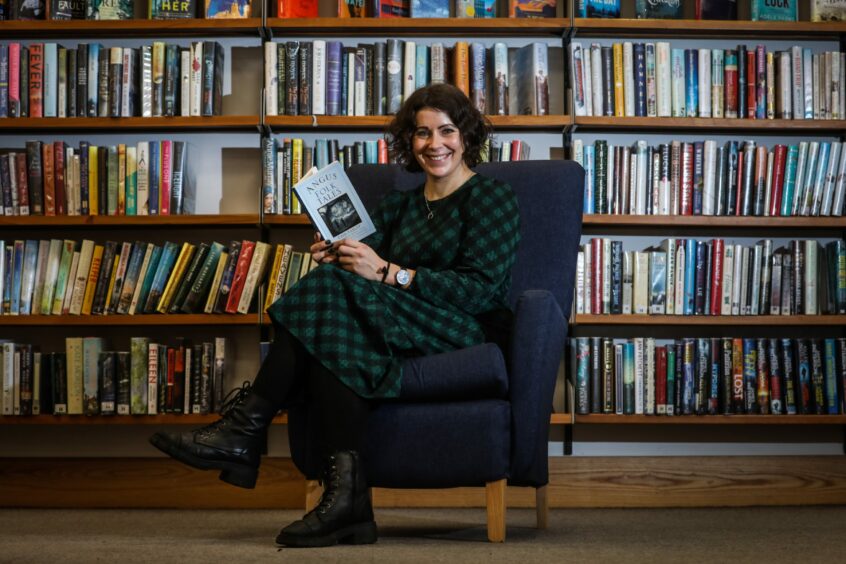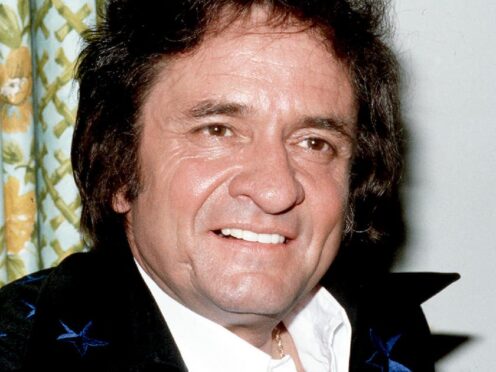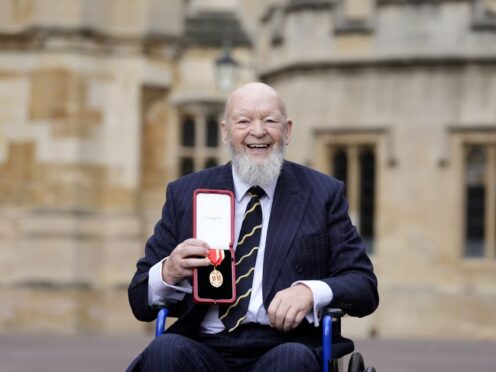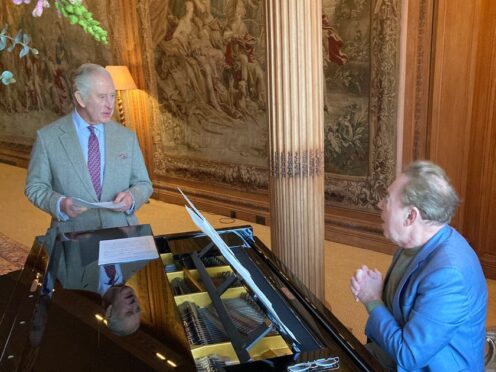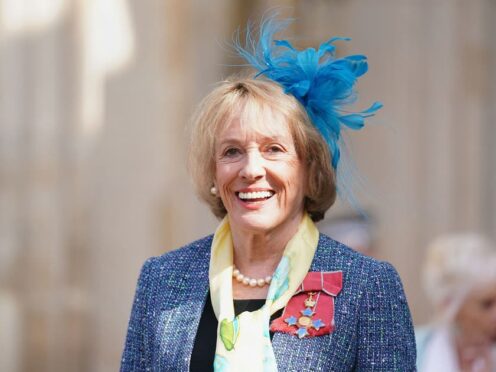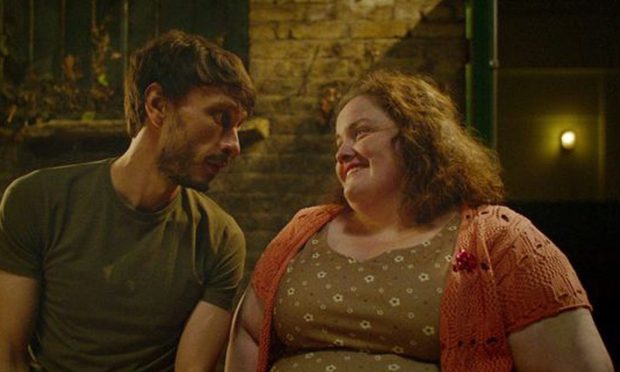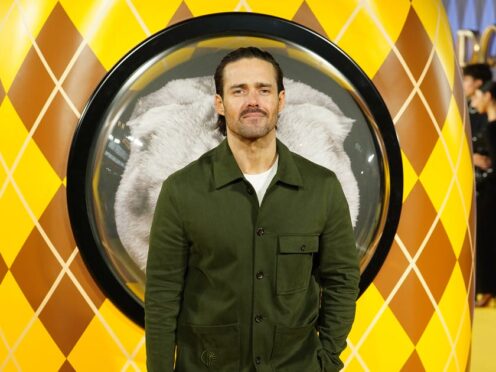In Glenisla, a “cursed” family lost their sons one by one, while on the outskirts of Brechin a young servant girl outwitted the last wolf in Angus.
And over in Broughty Ferry, the “shore sailor” told tall tales of fictitious sea adventures that eventually got him killed.
These are just some of the stories from the folklore tradition of Angus and Dundee – myths, legends and half-true stories shaped by landscape, people and history.
Following the rise in popularity of live storytelling events, Dr Erin Farley, a Dundee-based storyteller and local historian, has written a book compiling the best folk stories from the region.
Angus Folk Tales
Many readers may recognise some of the legends in Angus Folk Tales. These are local stories that have been told in various forms over the generations, among workers in bothies and kitchens, on the fields and in jute mills, right through to the present day in books, websites and storytelling events.
“A powerful sense of history, place and fate runs through the stories here, but the dramatic and supernatural are at home in the everyday, and they come with a wry sense of humour”, explains Dr Farley, who also holds a position as a library and information officer at the Local History Centre in Dundee Central Library.
“This is a world where ministers spar with the devil like a quarrelsome neighbour, ghosts still think about getting the neeps pulled, and the way you make porridge might be the only thing standing between you and your freedom.
“The rhythms of work and the land, and the often uneasy relationship with the ‘big families’ who own it, are a constant backdrop to these tales.”
A fascination with stories
Dr Farley has a long-held fascination with traditional stories, songs and poetry. Born in Edinburgh to parents from Angus and Dundee, as a child she was taken to visit her mum and dad’s home towns, where she heard the local legends and visited the former jute mills to look for ghosts.
She studied Scottish Ethnology at Edinburgh University and went on to do a PhD researching folklore, oral histories, traditional ways of life and culture in Scotland, in partnership with Dundee Libraries.
Meanwhile, she is also on the committee of Abertay Historical Society and in her free time she tells stories at live storytelling events.
Idea for a book
“I’ve always been on the lookout for traditional stories from Angus and Dundee because those are places that I have a connection to and an interest in”, she says.
“I noticed History Press which is the publisher this book is out with, they’ve been doing a series of folk takes from all around Britain. I kept waiting for Angus to come out, and it didn’t.
“All the other places in Scotland seemed to be getting their books. Eventually I thought, right, I’ve got a book’s worth of stories here, so I pitched it to the Scottish Storytelling Centre. They helped make it into a reality. This is my first book – I’m a bit terrified!
“Some of the stories are based on real events but some of them are fictional. They’re all stories that have been told in the oral tradition, so I’ve narrated them in the way that I would if I was telling them.
“I’ve tried to find my own angle and my own way to bring themes out of the story. The main thing I’ve done is made sure that every story I’ve included has a connection to a real place in Angus.”
Myths and legends
For Dr Farley, the most interesting stories are those that have an element of myth and legend about then rather than being a real account of historical facts.
A particular topic of interest for her is the concept of the devil, who is portrayed as a real being in the stories, appearing and disappearing as a mischief maker.
Sometimes the myths are interwoven with reality – for instance, in some stories the devil interacts with a person who did exist historically.
A Dundee and Angus readership
“Pretty much nothing in that book can be taken at face value as history, though!”, she laughs.
“Sometimes those are the best stories. I didn’t have a particular readership in mind when I wrote this but I imagine it will appeal to many people who live in Dundee and Angus.
“They’ll probably read it and think ‘that’s not how I remember this story’! But if it generates discussion and inspires people to talk about the stories they know, as well as to learn something new from the book, then I’d consider that a great success.”
The art of storytelling
Storytelling is as old as humanity itself – sharing anecdotes and using our imagination to create narratives it is what sets us apart from other species, after all.
Initially stories were passed down through the generations orally, but with the advent of mass media, book publishing and increased literacy rates, they have been increasingly written down too.
Now, in an age of digital technology and a world greatly changed since the days of agricultural societies, it may seem that these old stories are redundant.
A revival
But in fact, the opposite is happening. Live storytelling events are popping up all over the UK, including many in Scotland.
The Scottish International Storytelling Festival, TradFest, Orkney Storytelling Festival and many one-off events around the country attract talent and audiences from all over the world.
“Personally I prefer telling the old folk tales and local legends live to people”, says Dr Farley. “It’s quite an exciting time to be a traditional storyteller. There are a lot of really amazing storytellers in Scotland at the moment and many great events and festivals.
Enduring appeal
“There’s a sense of people having so much technology in their lives that sometimes having something that is totally person to person, with a traditional element, is quite a refreshing change.
“In a way though, traditional storytelling never really went away. We’re having a renaissance now where there’s more attention on it as a performance and art form but people have always been telling stories to each other – in the pub, to family members, at home etc.
“These stories still live in communities, they never totally went away even when we weren’t really paying much attention to them.”
Angus Folk Tales, by the History Press, £12.99.
The Shore Sailor
(Excerpt from The Shore Sailor, as told by Dr Erin Farley)
The town of Broughty Ferry, now encompassed by the expanding city of Dundee, was once a bustling fishing village. There was once a young lad who grew up there who dreamed of going to sea and making his fortune a sailor.
But the boy’s dreams were dashed when he discovered that he could barely set foot aboard a boat without being overcome by the most terrible seasickness. One day, the captain had to tell him not to come back in the morning.
Heartbroken, he hid himself away in daydreams, and spent more and more time in taverns by the shore. He regaled anyone who would listen with tales of adventures on the high seas, in which he was cast as the hero. He even began to wear the traditional clothes of a seafarer, the blue jacket and gold earring. He was known to all as the Shore Sailor.
One stormy winter’s night, a group of strangers came into Broughty Ferry Harbour on an unfamiliar boat. The Shore Sailor loved a new audience, and they plied him with whisky all night as he told his stories.
As he told them about his victories at sea, they thought that he must have plenty of gold and jewels in his pockets if all that was true. So when the pub closed and the Shore Sailor stumbled off into the night, they followed him.
Once they were in darkness, out of the glow of the street lamps, they hurried behind him and stabbed him in the back. They greedily rifled through his pockets. Of course, he had nothing. The only thing of any value was the gold earring he wore, so they cut it from his ear and ran back to their boat before they were discovered.
He had no family, and the robbers had taken the only thing that could have paid for a burial, so he lies in a pauper’s grave in the old Broughty Ferry kirkyard with no stone to remember him by. But if you are walking along the shore on a winter’s night, a man in old fashioned sailor’s clothing might fall into step with you and ask if you want to hear a story.
